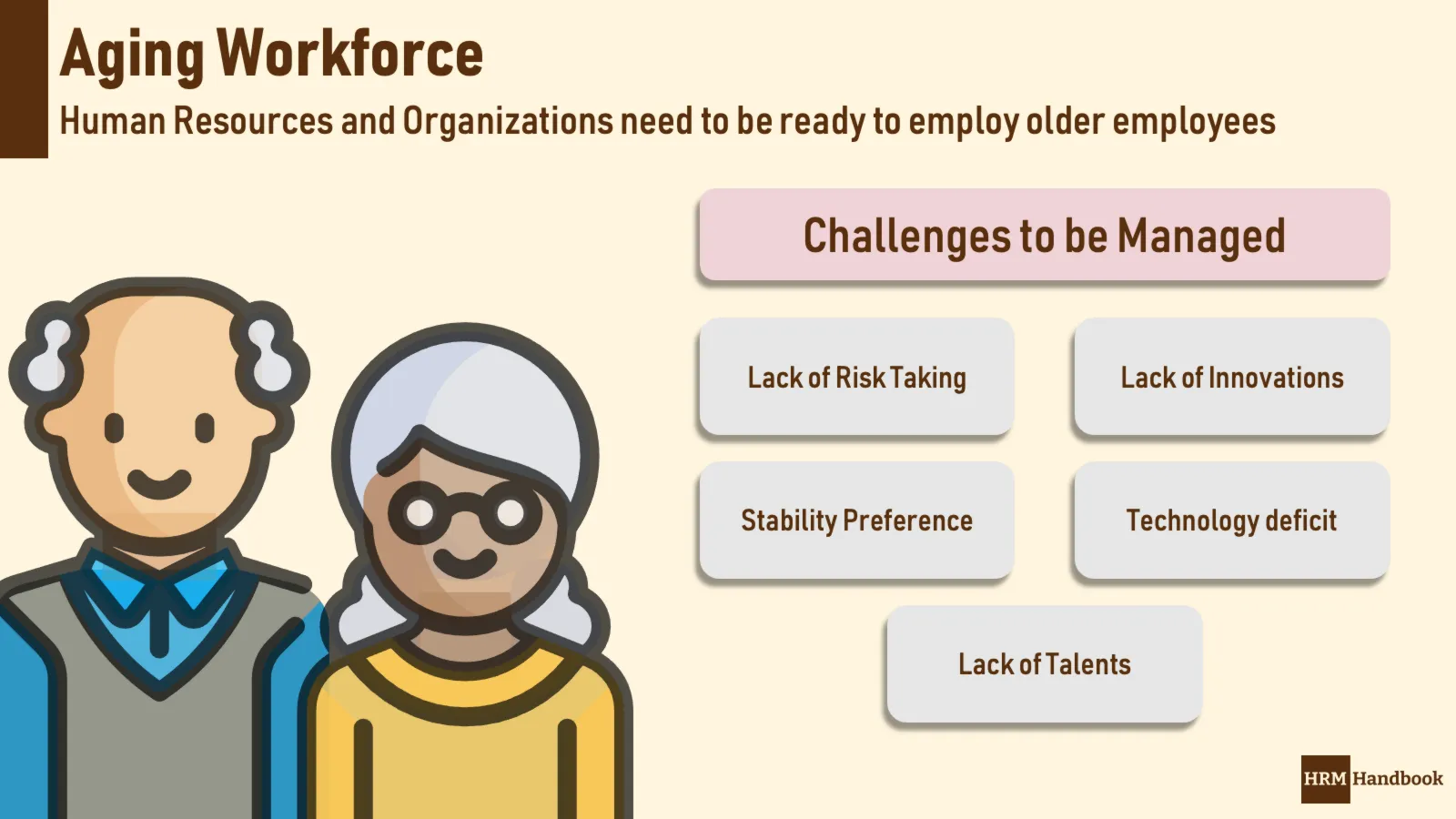Aging Workforce
The ageing workforce is a hot topic for all businesses and represents a major human resources challenge that is soon to come. It’s not just that employees are getting older, some knowledge and skills are completely disappearing because they are no longer being studied today and yet they are still needed. If we want to continue to build the infrastructure around us, we need to retain these knowledge and skills too, even if we do not need them every day. And we will also have to devise a system to keep the company innovative and productive, even if it is a little older in age than we are generally used to today.
Most countries are not yet feeling this pressure (Japan and Italy are currently the exceptions), but the lack of young talent will be a significant risk for most developed countries. Young graduates will not be available on the labour market (even if their unemployment rates remain high). HR will have to develop creative methods to keep the organisation efficient, productive and innovative. And at the same time, how to retain the know-how that could disappear as older employees retire.
The ageing population is a challenge for the whole of society. It will be a dramatic change for everyone. Our social and health networks will be under enormous pressure to provide the services we are used to. It will be very expensive and major reforms will be needed to afford such expensive care. On top of that, companies will suffer from labour shortages. They will have to explore all options to keep older employees productive and fully engaged in the life of the organisation.
Unfortunately, older workers usually prefer different values than today’s uncertain world can promise. Market uncertainty is not fully aligned with the expectations of an aging workforce. Older employees don’t like dramatic changes in work habits; they want the reassurance that they no longer have to adapt too much to change. They are rightly concerned that they will not be as accomplished and efficient as they have been used to, and this is the source of their fundamental fear of change. It’s not a reluctance to change, it’s a fear of failure.

They want to remain perfect and productive. They want to be an asset to the organization. They may block needed changes because they fear failure. Keeping employees engaged in a turbulent business world will be a big challenge for HR departments.
Aging Employees and Human Resources
Older employees value job stability and work environment. They do not welcome dramatic changes in their work habits. They prefer long-term and stable relationships. However, modern business in a competitive environment requires dramatic shifts and changes. HR must find ways to unlock change without losing employee engagement and loyalty.
Aging employees always value a stable environment; the challenge for HR professionals is how to maintain the momentum of change in the organization. Innovation is the only way a Western company can win against its competitors from developing countries. Human resources must identify the potential to get older employees to maintain their enthusiasm for pushing for change.
The younger workforce also lacks some technical skills and competencies. They prefer soft skills in business areas such as social media, finance or human resources. They dislike working in operations because they lack logistical and production skills. This will be a big challenge as many companies are reopening their operational plants in Western countries. Promoting technical knowledge and competencies will be a challenge for the human resources department in the near future.
The Human Resources Department must carry out a detailed workforce analysis. It should understand what skills and competencies will be lost without any leadership and management action. It must prepare a plan to retain know-how and critical skills in the organisation. It must develop a plan for what skills and competencies will be lost, and management must find a solution so that it does not lose the ability to provide services to clients.
Talent acquisition needs to be upgraded, younger and older employees need to be attracted. This is a real challenge because these two recruitment target groups do not usually share common interests. Recruiters will need to find innovative ways to engage them both.
An aging workforce will change pay structures. Currently, older employees typically earn more than young talent (at least in mature organizations). This approach is likely to change with the shortage of young talent. It will be a significant change in our habits and expectations.
The exception will be declining skills and competencies. Some older employees will not be allowed to retire quickly. Many organisations will depend on their skills and experience. Implementing a training strategy will be a challenge for HR. Otherwise, our businesses will not survive.